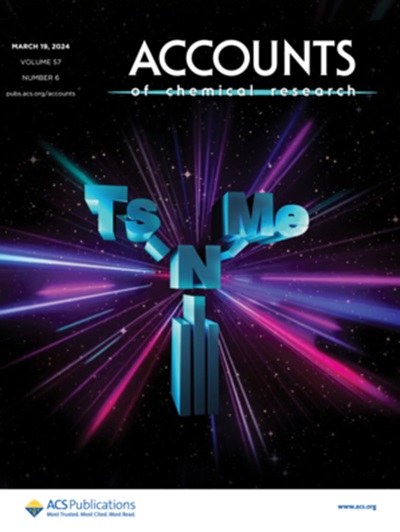Assessing index CD4 and associated outcomes at 1-year in a tertiary HIV clinic, KwaZulu-Natal
IF 17.7
1区 化学
Q1 CHEMISTRY, MULTIDISCIPLINARY
引用次数: 0
Abstract
Background: Human immunodeficiency virus (HIV) management guidelines have evolved from initiating therapy at CD4 counts of ≤ 200 cells/m3 to implementing universal test and treat (UTT). This study aimed to assess whether in clinical practice, patients are presenting with higher baseline CD4 counts, describe the incidence of opportunistic infections and the proportion that achieved viral suppression.Methods: A retrospective cohort design with convenience sampling was conducted. Cohort 1 included patients initiated on antiretroviral therapy (ART) between 01 January 2014 and 31 December 2014, when criteria were set at CD4 count ≤ 350 cells/mm3. Cohort 2 included patients initiated on ART between 01 January 2019 and 31 December 2019, during the UTT era.Results: At ART initiation, the median CD4 cell was 170 cells/mm3 (interquartile range [IQR]: 85.5–287) in Cohort 1 cells/mm3 and 243 cells/mm3 (IQR: 120–411) in Cohort 2. Tuberculosis was the predominant OI in the group with CD4 cell count ≤ 200 cells/m3 in both Cohort 1 (26.8%) and Cohort 2 (27.9%), p = 0.039. At 1 year, virological suppression was achieved in only 77.7% and 84.7% of Cohorts 1 and 2 patients.Conclusion: A notable portion of patients at King Edward VIII Hospital’s HIV clinic commenced ART with CD4 counts significantly below the recommended guideline thresholds.Contribution: The research revealed a delay in initiating ART. A comprehensive reevaluation is essential to pinpoint the factors contributing to this delay and to devise customised interventions.评估夸祖鲁-纳塔尔省一家三级艾滋病毒诊所的 CD4 指数和 1 年后的相关结果
背景:人类免疫缺陷病毒(HIV)管理指南已从 CD4 细胞数≤ 200 cells/m3 开始治疗发展到实施普遍检测和治疗(UTT)。本研究旨在评估在临床实践中,患者的基线CD4细胞数是否更高,描述机会性感染的发生率以及达到病毒抑制的比例:方法: 采用方便抽样的回顾性队列设计。队列 1 包括 2014 年 1 月 1 日至 2014 年 12 月 31 日期间开始接受抗逆转录病毒疗法(ART)的患者,当时的标准是 CD4 细胞数≤ 350 cells/mm3。队列2包括2019年1月1日至2019年12月31日期间开始接受抗逆转录病毒疗法的患者,当时正值UTT时代:在开始接受抗逆转录病毒疗法时,队列 1 的 CD4 细胞中位数为 170 cells/mm3(四分位数间距 [IQR]:85.5-287),队列 2 的 CD4 细胞中位数为 243 cells/mm3(四分位数间距 [IQR]:120-411)。在 CD4 细胞计数≤ 200 cells/m3 的人群 1(26.8%)和人群 2(27.9%)中,结核是最主要的 OI,p = 0.039。1年后,只有77.7%和84.7%的第1组和第2组患者实现了病毒抑制:结论:在爱德华八世国王医院的艾滋病诊所,有相当一部分患者在开始接受抗逆转录病毒疗法时,CD4 细胞计数明显低于推荐的指导阈值:贡献:这项研究揭示了抗逆转录病毒疗法启动的延迟。有必要进行全面的重新评估,以找出导致这一延迟的因素,并制定个性化的干预措施。
本文章由计算机程序翻译,如有差异,请以英文原文为准。
求助全文
约1分钟内获得全文
求助全文
来源期刊

Accounts of Chemical Research
化学-化学综合
CiteScore
31.40
自引率
1.10%
发文量
312
审稿时长
2 months
期刊介绍:
Accounts of Chemical Research presents short, concise and critical articles offering easy-to-read overviews of basic research and applications in all areas of chemistry and biochemistry. These short reviews focus on research from the author’s own laboratory and are designed to teach the reader about a research project. In addition, Accounts of Chemical Research publishes commentaries that give an informed opinion on a current research problem. Special Issues online are devoted to a single topic of unusual activity and significance.
Accounts of Chemical Research replaces the traditional article abstract with an article "Conspectus." These entries synopsize the research affording the reader a closer look at the content and significance of an article. Through this provision of a more detailed description of the article contents, the Conspectus enhances the article's discoverability by search engines and the exposure for the research.
 求助内容:
求助内容: 应助结果提醒方式:
应助结果提醒方式:


